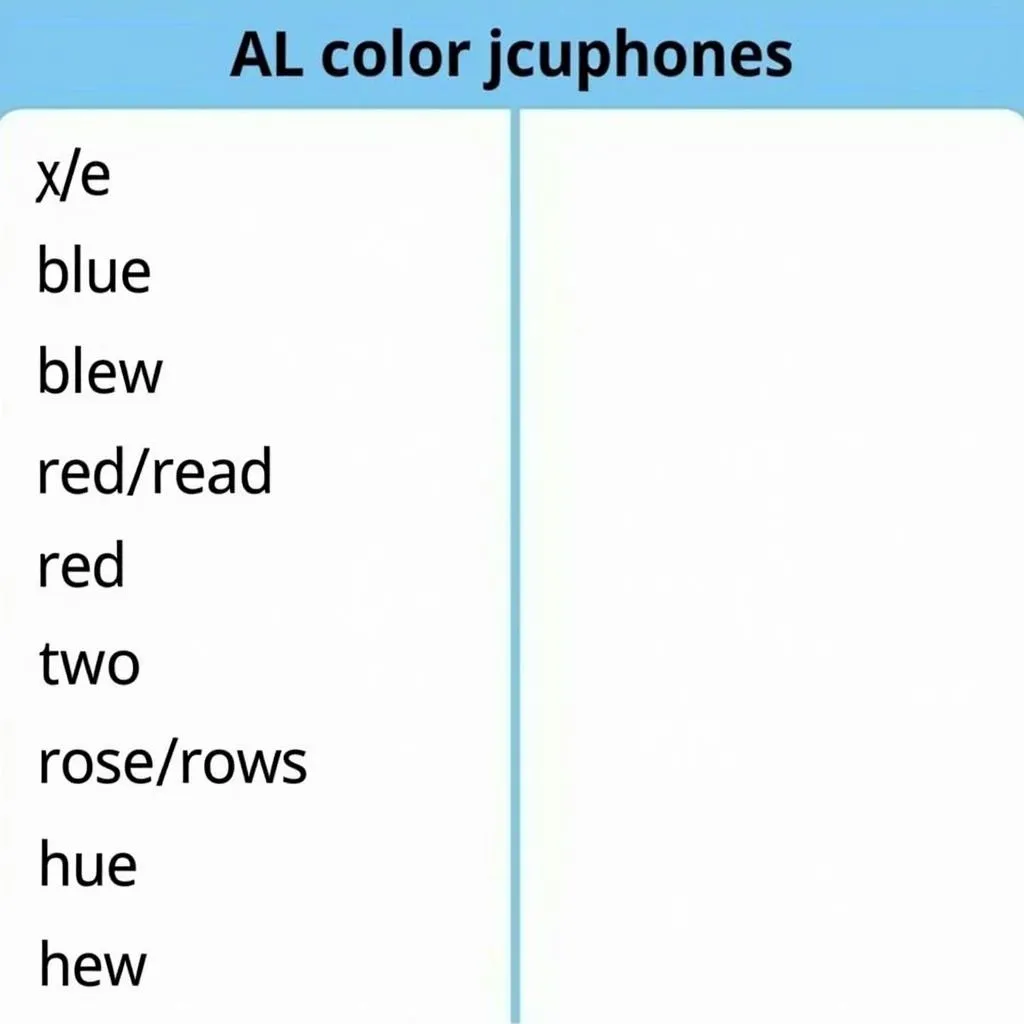Have you ever encountered the fascinating world of color homophones? These linguistic quirks occur when two colors sound the same but have different spellings and meanings. While they might seem like a simple play on words, color homophones reveal intriguing connections between language, perception, and the visual arts.
Unraveling the Mystery of Color Homophones
Color homophones can lead to confusion, especially in spoken conversations. Imagine asking a friend to hand you a “blue” paintbrush, only to receive a puzzled look when they see a “blew” one instead! This amusing example highlights the importance of context in understanding these tricky word pairs.
 Examples of common color homophones
Examples of common color homophones
Why are Color Homophones Important?
While seemingly trivial, color homophones offer a unique opportunity to explore the interplay between our visual and auditory senses. Recognizing these word pairs can:
- Enhance language skills and vocabulary: Understanding homophones, in general, can expand vocabulary and improve spelling and pronunciation.
- Spark creativity: Color homophones can inspire creative writing prompts, wordplay, and even artistic endeavors.
- Deepen understanding of color: Exploring color homophones encourages a more thoughtful and nuanced approach to perceiving and describing colors.
Common Color Homophones
Let’s delve into some frequently encountered color homophones:
- Blue/Blew: “Blue” refers to the color of a clear sky, while “Blew” is the past tense of the verb “to blow.”
- Red/Read: “Red” describes the color of blood or fire, whereas “Read” denotes the act of comprehending written text.
- Rose/Rows: “Rose” signifies both a flower known for its beauty and fragrance and a reddish-pink color. Conversely, “Rows” refers to a linear arrangement of objects or people.
- Hue/Hew: “Hue” represents a particular shade or tint of a color. “Hew” typically signifies chopping or cutting with a sharp tool, often used in the context of wood.
 A painting with a title playing on a color homophone
A painting with a title playing on a color homophone
The Significance of Context
Context plays a crucial role in deciphering the intended meaning of color homophones. In written communication, surrounding words and punctuation provide essential clues. In spoken language, tone of voice, body language, and the overall conversation topic contribute to understanding.
For instance, if someone says, “I read a book about the color red,” it is clear they are referring to the act of reading and the color itself. However, if someone says, “I red the entire book in one sitting,” the context suggests they mean “read” rather than the color.
Beyond Simple Wordplay
Color homophones highlight the complexities and nuances of language. They remind us that words can hold multiple meanings and interpretations depending on the situation. Engaging with these linguistic quirks can enhance our appreciation for the power and flexibility of language.
Conclusion
Next time you come across a color homophone, take a moment to appreciate the wordplay and the connection between sound and meaning. These seemingly simple word pairs offer a fascinating glimpse into the complexities of language and our perception of the world around us. So, embrace the world of color homophones, and let them inspire your creativity and language skills!

